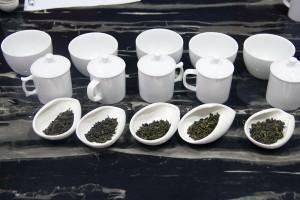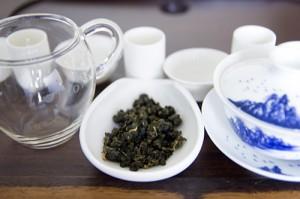Single origin teas are commonly defined as teas made from leaves harvested from a single country, region or farm. This is often used in contrast to “blended teas”, teas that are made with ‘raw materials’ from various regions.
An example of a classic blend would be the English Breakfast Tea which although has a composition that varies according to producer, would generally contain tea from Sri Lanka, the Assam region in India and Kenya.
As specialty teas increasingly go by names like “Tieguanyin”, “Gyokuro” “Dragon Well” and so forth as opposed to “XXX Blend”, there is the belief that single origin teas are generally considered superior to blended teas, but how true is that?
Revisiting the Definition of Single Origin Teas
Cultivar
Not having done any research on the origins (pun unintended), it would seem this phrase was imported from the coffee world.
*Disclosure- I came to the conclusion as I was typing “single origin” and Google suggested “single origin coffee” and “single origin roasters” first.

For example, there are more than 100 different types of cultivar and cultigens within the 70 square kilometer region recognized as the Wuyishan ‘zhengyan’ (正岩) or core producing area.
What is commercially accepted as ‘Dahongpao’ includes an accepted ‘blend’ of tea leaves harvested from Dahongpao, Rougui and Shuixian cultivars, handed down to 12 masters. The smoothness of Shuixian juxtaposed against the fragrance of Rougui creates a similar experience when blended with the Dahongpao cultivar.
How much of a single origin tea would you consider that to be, notwithstanding the fact that these commercial Dahongpaos can be rather pricey by Western standards?
For the fun of it, you could technically get a Tieguanyin, Huang Jin Gui, Maoxie, Benshan and Qi Lan (pictured) from Anxi tea region and blend it together.
You can technically call it a ‘single origin tea’ if we go by the classic definition but……
Location
How far would it be appropriate to narrow down the definition of origin?
For example would you consider ‘Anxi Tieguanyin’ to be a single origin tea even though Anxi Tieguanyin could be Xiping Village which tends to have a fuller ‘yun’ (韵) or Xianghua which tends to be more fragrant. Or it could be a combination of the 2 to reap the best of both worlds. And we haven’t gone to Huqiu, Gande and many other tea producing areas within what is known as ‘Inner Anxi’ let alone ‘outer Anxi’.
On the other hand, if we are talking about Chinese teas, there is no point in going down to ‘estate’ level because the British colonial estate model doesn’t exist in China.
Some of the best tea are made from small farms that would command no more significant a name than ‘Li’s farm’ or ‘Wang’s farm’, not exactly as memorable and distinct a name as Goomtree or Margaret’s Hope for example.
*Side note- Wang’s farm is not very helpful in certain villages in Anxi where more than half of the farmers share that surname*
In fact, it is quite common for producers to buy from other farms even though they own farms of their own.
Hence, it is not possible to be too specific in the definition of location, at least for the commercial market.
On the other hand, a definition like ‘single country’ is meaningless if that single country in question is China- a country that produces over 1,000 varieties of tea spanning the entire spectrum.
Quality

However, a single origin Gunpowder from a specific farm in Zhejiang for example is still commercial grade no matter how you look at it.
No one in the right frame of mind would consider that particular Gunpowder to be of superior quality to a ‘blended’ Dahongpao. This statement is made with the caveat of reference to production quality, not personal preference.
To cite another example, some of the best Puer cakes are made from blends as opposed to being single origin.
What Purpose does ‘Single Origin’ Serves then?
Perhaps for people making the transition from coffee, familiar phrases serves as a crutch. As a side note I am amazed how often I come across people using the phrase “pulled a cup of tea”.
If we truly wish to be entirely accurate, “single origin” teas ought to refer to teas made from a single tree- i.e. Dancong and even that definition has been superseded in the 80s to include teas made from cloned trees from the same ‘mother tree’.
It would seem that there is too much disagreement to come up with an all-encompassing definition that is viable to implement, that being the case, I would not be too hung up on the phrase ‘single origin teas’.
See here for more articles related to tea appreciation
